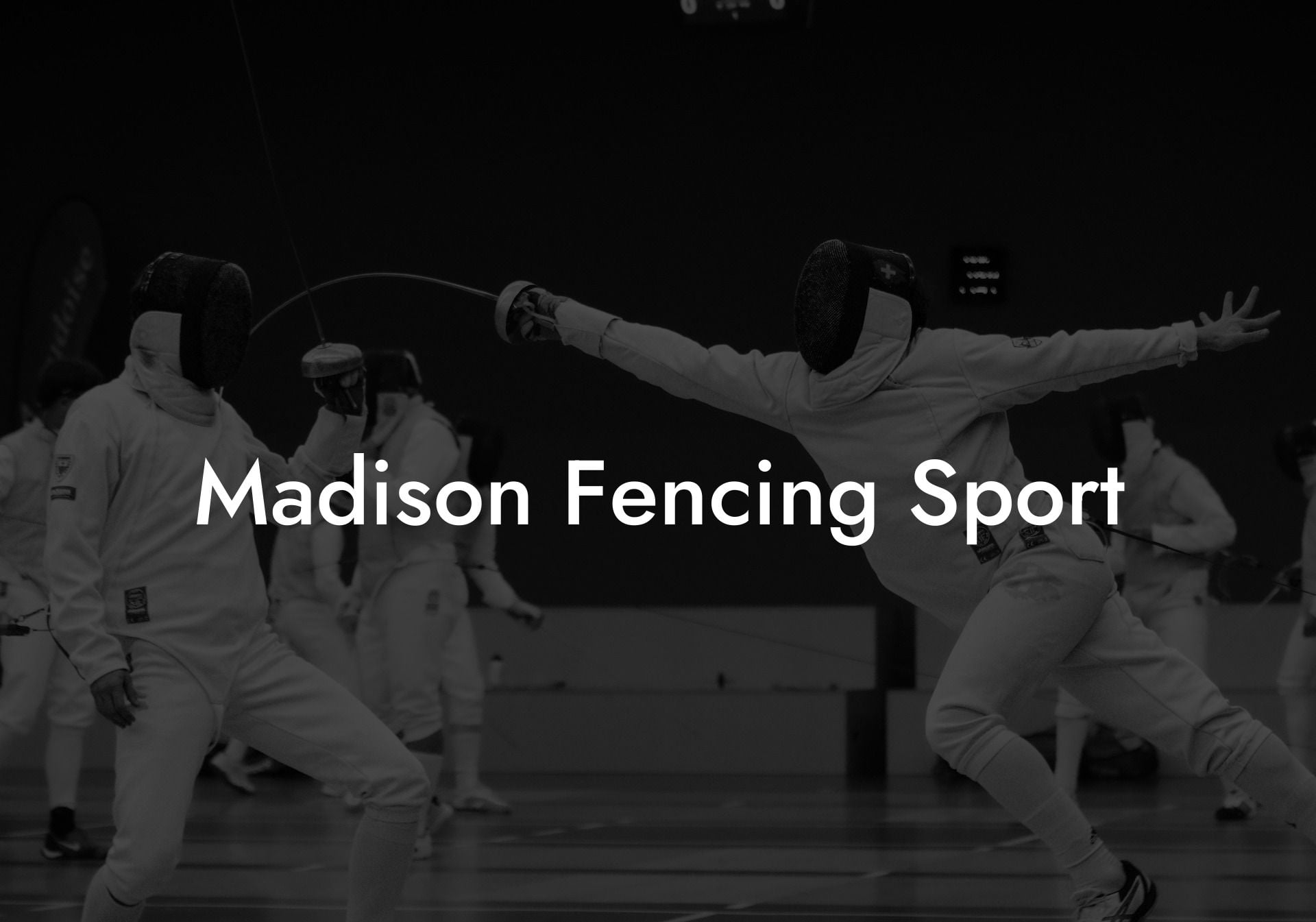Welcome to the exciting world of fencing! In this guide, we will explore the Madison Fencing Sport, uncover its history, share some essential tips, and highlight the significance this sport has in the fencing community. Whether you're an experienced fencer or completely new to the sport, this comprehensive guide will help you navigate the fascinating world of Madison fencing.
Madison Fencing Sport Table of Contents
A Brief History of Madison Fencing Sport
Fencing has been around for centuries, and Madison Fencing Sport is a proud contributor to its rich history. Born in the early 20th century, this fencing style originated in Madison, Wisconsin, and has since developed into a widely practiced and beloved sport.
Evolution of Madison Fencing
The development of Madison fencing can be traced back to the local fencing clubs that were established in the early 1900s. These clubs provided a venue for enthusiasts to learn and develop their skills in fencing. As the sport grew in popularity, its unique techniques started to evolve, which later became known as Madison Fencing.
Madison Fencing's Impact on the Fencing World
Today, Madison Fencing Sport is renowned for its unique blend of traditional fencing techniques mixed with a strong sense of community and a vibrant sporting culture. Whether it's participating in local fencing events or engaging in friendly duels at the club, the spirit of camaraderie and sportsmanship is what truly sets Madison fencing apart from its counterparts.
Essential Tips for Practicing Madison Fencing Sport
Before you embark on your journey into Madison fencing, here are some essential tips to help you get started:
1. Select the Right Weapon
There are three different weapons in fencing: foil, epee, and saber. Each weapon requires a unique set of skills, and it's crucial to choose the one that suits your personal style and preference.
2. Join a Local Fencing Club
Finding a reputable fencing club is crucial for learning the fundamentals of the sport. By joining a club, you will gain access to experienced coaches and a supportive community of fellow fencers who share your passion for the sport.
3. Develop Your Footwork
In fencing, footwork is key. Ensure you dedicate time to improve your agility and balance, as these will provide a strong foundation for your fencing prowess.
4. Learn the Rules and Regulations
Familiarizing yourself with the rules and regulations of Madison fencing will help you understand the intricacies of the sport and prevent any potential misunderstandings during a match.
Madison Fencing Sport Example:
Imagine you are attending your first Madison Fencing Sport class at your local club. As you walk in, you will likely notice a welcoming and friendly atmosphere, with people of all ages and skill levels practicing and learning together. The coaching staff will provide you with guidance on selecting the appropriate weapon and ensuring that the proper safety equipment is worn.
Throughout your lesson, you will learn the basic footwork and techniques needed to succeed in the sport. You might practice fundamental moves, such as lunges and parries, while honing your reflexes through a variety of drills. At the end of the session, you may even participate in friendly bouts with fellow fencers, allowing you to put your newfound skills to the test.
We hope that this guide has provided you with a thorough understanding of Madison Fencing Sport and has sparked your interest in this unique and engaging sport. Now that you have the foundational knowledge, don't hesitate to dive deeper into the world of fencing by exploring other guides on Anchorage Fencing Club. And of course, feel free to share this article with others who might share your newfound enthusiasm for Madison Fencing Sport. Remember, fencing is about skill, discipline, camaraderie, and – above all – having fun. So, grab your weapon and let the adventure begin!













